Zongsheng Zheng
A survey on active noise control techniques -- Part II: Nonlinear systems
Oct 19, 2021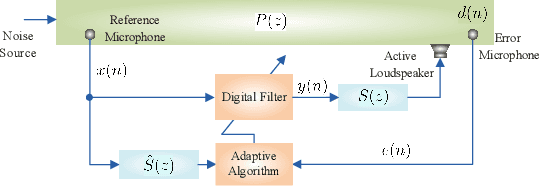
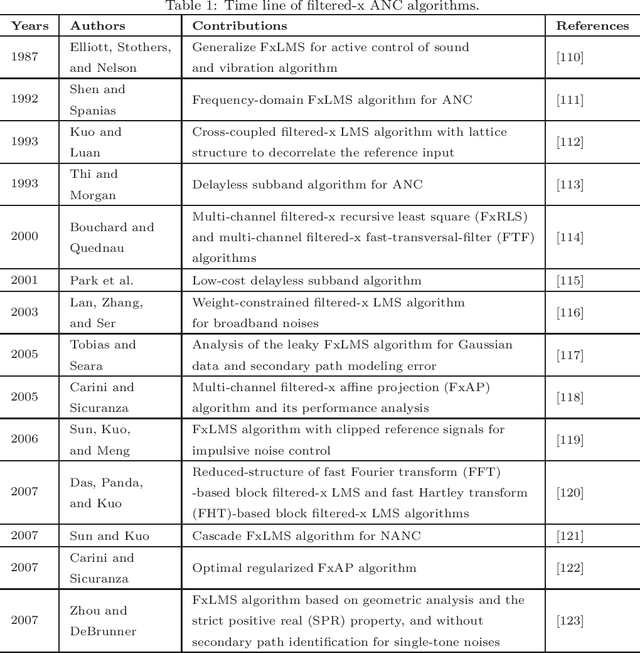
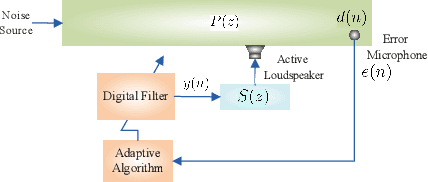
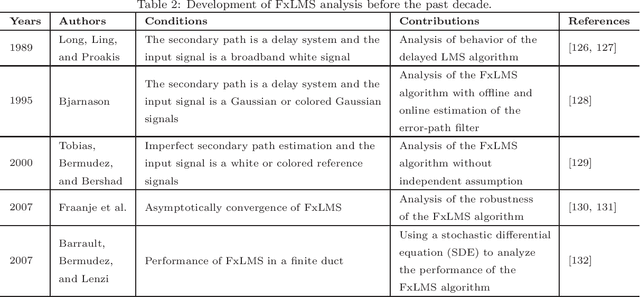
Abstract:Part I of this paper reviewed the development of the linear active noise control (ANC) technique in the past decade. However, ANC systems might have to deal with some nonlinear components and the performance of linear ANC techniques may degrade in this scenario. To overcome this limitation, nonlinear ANC (NLANC) algorithms were developed. In Part II, we review the development of NLANC algorithms during the last decade. The contributions of heuristic ANC algorithms are outlined. Moreover, we emphasize recent advances of NLANC algorithms, such as spline ANC algorithms, kernel adaptive filters, and nonlinear distributed ANC algorithms. Then, we present recent applications of ANC technique including linear and nonlinear perspectives. Future research challenges regarding ANC techniques are also discussed.
A survey on active noise control techniques -- Part I: Linear systems
Oct 01, 2021



Abstract:Active noise control (ANC) is an effective way for reducing the noise level in electroacoustic or electromechanical systems. Since its first introduction in 1936, this approach has been greatly developed. This paper focuses on discussing the development of ANC techniques over the past decade. Linear ANC algorithms, including the celebrated filtered-x least-mean-square (FxLMS)-based algorithms and distributed ANC algorithms, are investigated and evaluated. Nonlinear ANC (NLANC) techniques, such as functional link artificial neural network (FLANN)-based algorithms, are pursued in Part II. Furthermore, some novel methods and applications of ANC emerging in the past decade are summarized. Finally, future research challenges regarding the ANC technique are discussed.
Study of Proximal Normalized Subband Adaptive Algorithm for Acoustic Echo Cancellation
Aug 14, 2021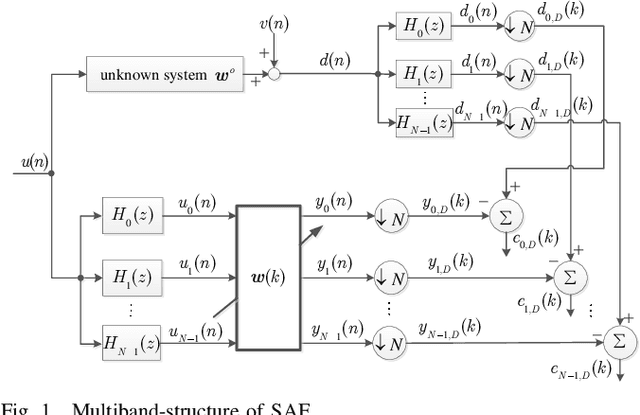
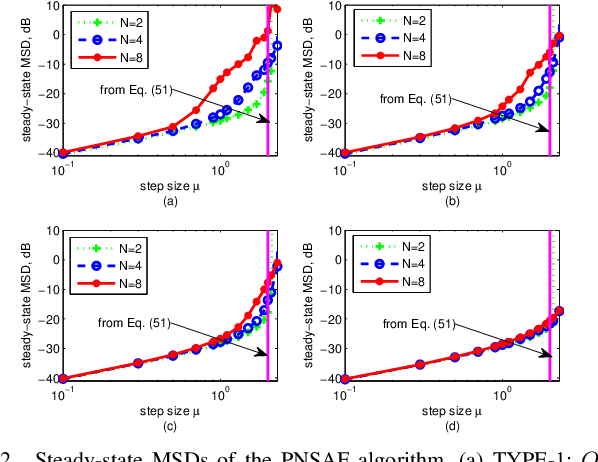
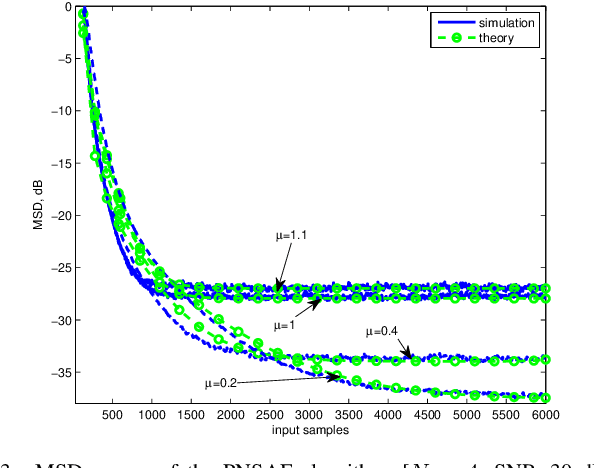
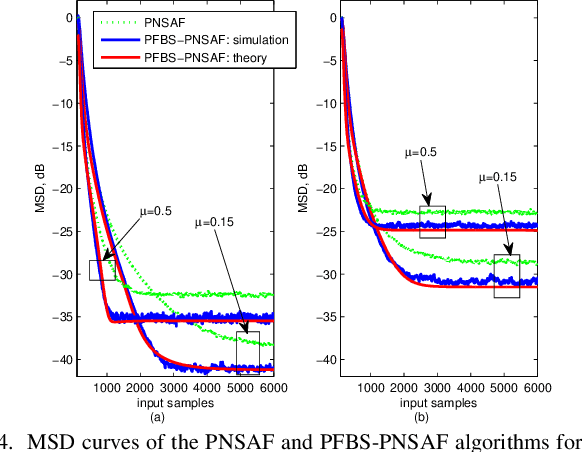
Abstract:In this paper, we propose a novel normalized subband adaptive filter algorithm suited for sparse scenarios, which combines the proportionate and sparsity-aware mechanisms. The proposed algorithm is derived based on the proximal forward-backward splitting and the soft-thresholding methods. We analyze the mean and mean square behaviors of the algorithm, which is supported by simulations. In addition, an adaptive approach for the choice of the thresholding parameter in the proximal step is also proposed based on the minimization of the mean square deviation. Simulations in the contexts of system identification and acoustic echo cancellation verify the superiority of the proposed algorithm over its counterparts.
 Add to Chrome
Add to Chrome Add to Firefox
Add to Firefox Add to Edge
Add to Edge